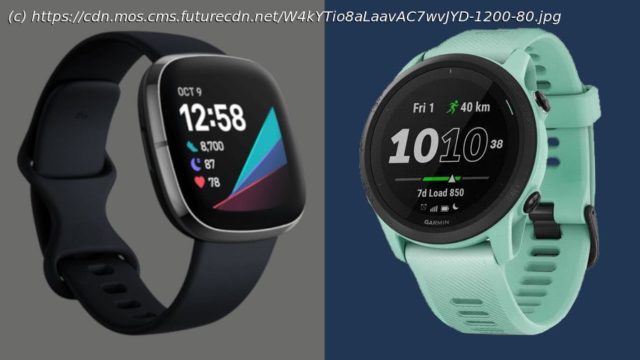They’re two of the biggest names in fitness wearables, but how can you decide which is right for you and your budget?
Fitbit and Garmin are two of the biggest names in the fitness tracker and smartwatch business. Especially if you care about keeping a closer eye on your health and fitness. Garmin has been around longer, making sports watches that over time have evolved to behave more like smartwatches in recent years. So you can start paying your way or listening to music without having your phone nearby. Fitbit arrived on the scene after Garmin and started with fitness trackers before adding smartwatches to its collection of wearables. Fitness tracking remains at the core of what it does, but it’s now exploring how it can better monitor your health and activities like running and swimming. Both offer a variety of different models and options, making it hard to work out which one is actually the best fit for you. That’s why we’ve pulled together this guide to help make that decision an easier one, picking out the biggest differences in the hardware, software and features that these two wearable heavyweights have to offer. Garmin launched its first Forerunner watch back in the early 2000s and since then it’s added a range of lines including its Vivoactive and Fenix watches. All have sports tracking at the core, offering a range of different designs and mix of features. Some of the most popular models are: Battery life One of the staples of Garmin’s fitness trackers and watches is the promise to deliver big battery life. Whether you go for something cheap like the Vivofit fitness tracker or something high end like the Forerunner 945, Garmin will generally offer close to a week of battery life and in many instances longer. It also takes into great consideration that using features like GPS or heart rate monitoring while tracking an activity can greatly reduce battery. So watches like its outdoor-centric Fenix series include an UltraTrac battery mode to give you more tracking time while reducing the rate it records data like GPS. You’ll also find new power saving and battery modes that switch off power hungry features you don’t regularly use to retain battery for the features you do use. On the Venu, Garmin’s most smartwatch-like device, it’s the only device in its collection that features a colour AMOLED display that can be used in an always-on mode. It still manages multiple days of battery life, despite using a more power-hungry display technology than the transflective display technology Garmin uses on the majority of its other watches. Fitness features We think it’s fair to say that when it comes to what Garmin’s watches and fitness trackers can actually monitor, there is a lot. Those feature sets vary across devices and ranges, but many of the core features run across the ranges to offer a more consistent and familiar experience. So from Vivosmart to Fenix, you’re going to get 24/7 activity tracking, continuous heart rate monitoring and sleep monitoring. You’ll also get some of Garmin’s more motivational fitness tracking features like Move IQ and adaptive step counts that are designed to keep you moving during the day in subtle but very meaningful ways. You can also find features like stress monitoring, guided breathing exercises, women’s health tracking and Garmin’s Body Battery monitor. This looks at metrics like sleep and heart rate to determine the energy levels you have for the day. When it comes to sports tracking, this is really where Garmin’s devices excel. It covers core sports like running, cycling and swimming (pool and open water), offering a host of rich metrics you can delve into during or after activities. When you’re willing to spend more on watches like the Fenix or Forerunner 945, you’ll also start to see sports profiles for more outdoor activities like hiking, skiing, climbing or even paddleboarding.






